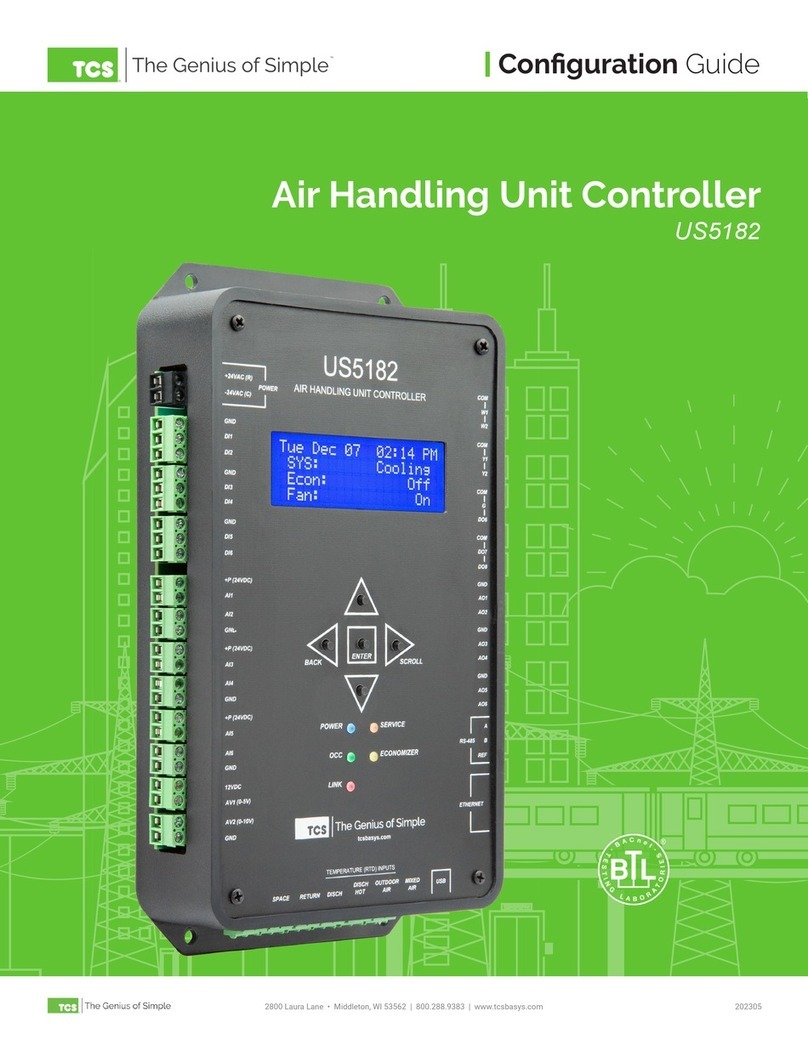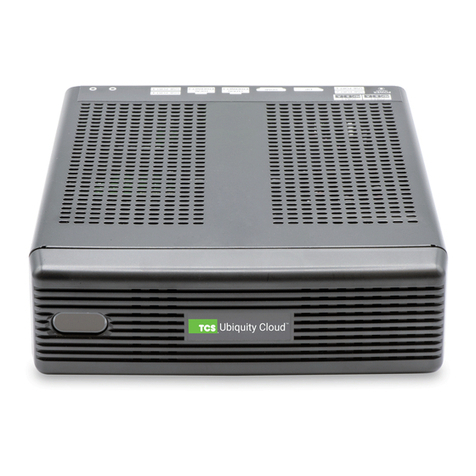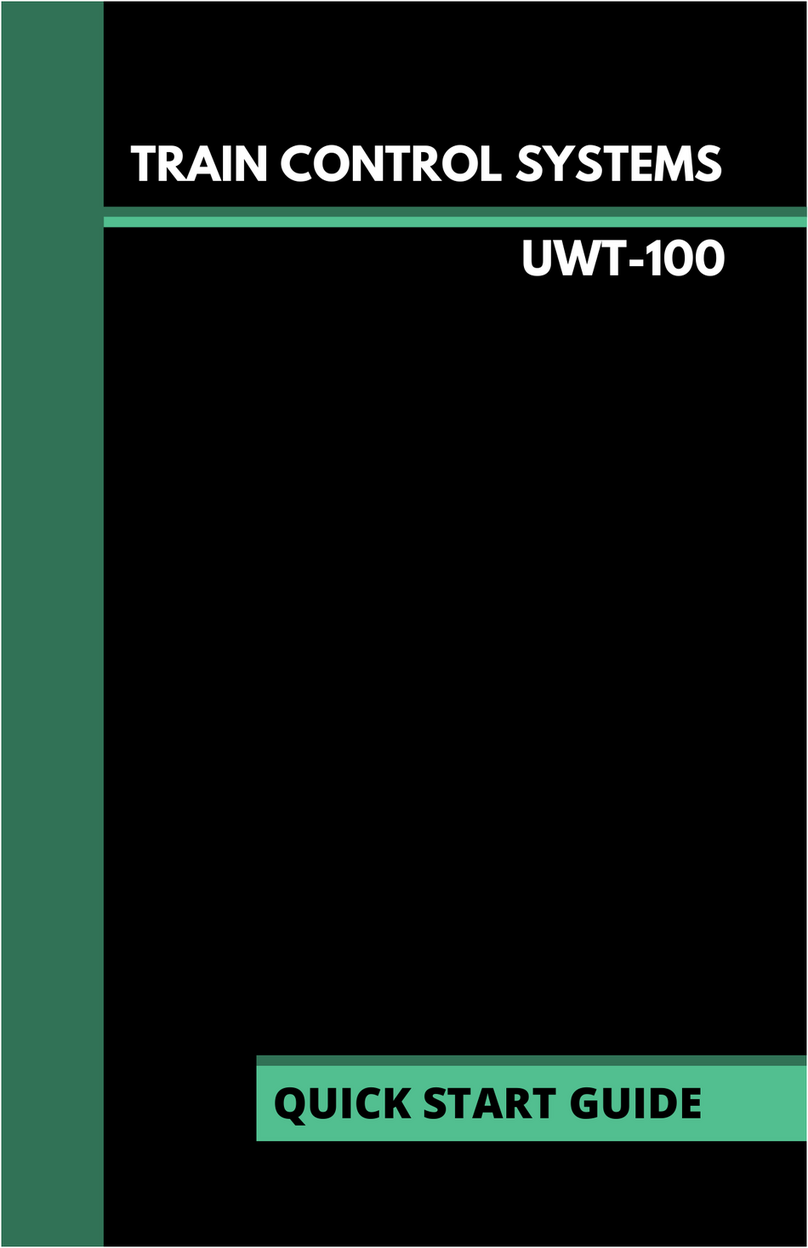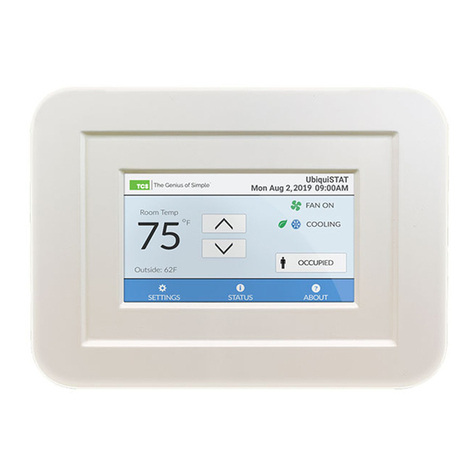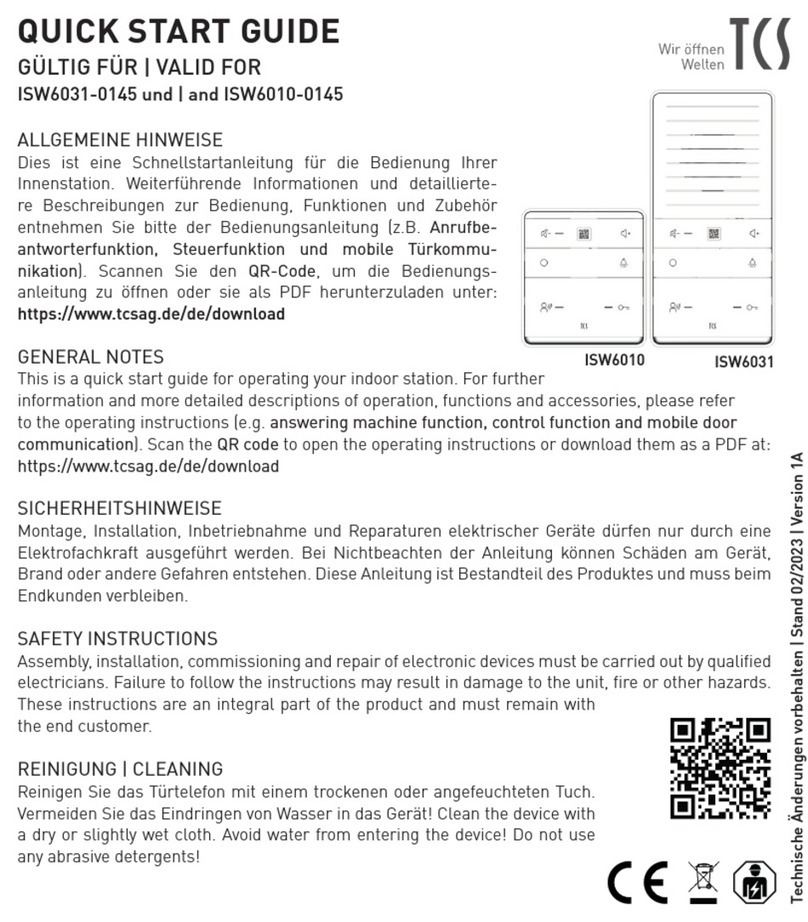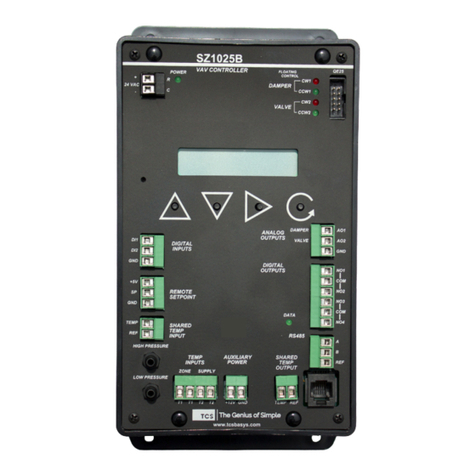
2800 Laura Lane • Middleton, WI 53562 | 800.288.9383 | www.tcsbasys.com
33
Configuration
Introduction
Congratulations on choosing the UbiquiSTAT™ room controller! The Ubiquistat series of controllers are feature rich,
multifunction touchscreen devices providing extensive controls across a wide range of HVAC applications.
This manual covers all 16 variations of Ubiquistats including wired, wireless, and built-in dehumidication. It includes all
the information necessary to congure your UbiquiSTAT room controller, the communication network, and other devices
via the touchscreen.
Complete the conguration after installation (refer to the UbiquiSTAT Installation Manual and after completion of the
Startup Wizard (refer to the UbiquiSTAT Quick Setup Guide). Refer to the UbiquiSTAT BACnet Explorer Guide for advanced
information on using the built-in BACnet Explorer to edit the device’s BACnet programming objects directly.
Your conguration settings will be uploaded to Ubiquity Cloud the rst time you make a connection to the site.
Alternatively, you can skip conguring the UbiquiSTAT via the touchscreen and perform all congurations via Ubiquity
Cloud or TCS Insight software, which is available for download on the TCS website.
If you have any questions regarding your UbiquiSTAT room controller, contact TCS Technical Support at 800.288.9383,
ext. 2. Our Technical Support Department hours are Monday – Friday, 7:00 a.m. to 7:00 p.m. (CST).
Conguring Via the Touchscreen Interface
Home Screen
The Home screen displays at-a-glance system information and
basic user controls. The display automatically returns to the
Home screen and the display dims after 10 minutes of inactivity.
From the Home screen, you can congure many parameters for
the UbiquiSTAT. You can also change any initial settings you
made when following the UbiquiSTAT Quick Setup Guide.
For conguration options using the built-in BACnet Explorer, refer
to the UbiquiSTAT BACnet Explorer Guide.
No. Description
(All models/versions unless otherwise indicated)
1Room Temperature and Setpoints
2Digital Input Setpoint Setback Active Indicator
3 Information Text (from connected sensors)
4Indoor Relative Humidity
5 Settings Menu
6 Status Screens
7About Screen
8 Service Status Indicator
9 Display Banner (Device Name and Date/Time)
10 Fan Operation Indicator
11 System Status (Heating/Cooling)
12 Economizer Status
13 Dehumidication Status
14 Occupancy Status
4X11 4X21 4X41 4X51
4X11 4X21 4X41 4X51
4X4X 4X5X
1
2
3
4
5 6 7
9
10
11
12
13
14






